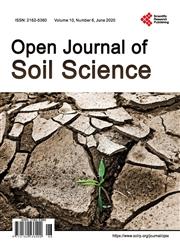The Mekong Delta in Vietnam and Cambodia Is Subsiding and in Need of Remediation
引用次数: 3
Abstract
Land subsidence and rising sea levels could result in 40% of the Mekong Delta being covered by the South China Sea within the next few decades. The impact of groundwater withdrawal, in the SE Asia mega deltas of Ganges-Brahmaputra Delta, Jakarta Delta, Chao Phraya Delta and Mekong Delta, is a major reason these deltas are sinking. There are lessons to be learned from both failures and successful remediation efforts in other mega deltas as Vietnam policy makers seek to address Mekong Delta subsidence. Without a significant Vietnam government remediation and mitigation efforts, land subsidence in the Mekong Delta will continue. Land subsidence has occurred in the Mekong Delta as a result of the retention of sediments behind the China and Laos dams on the main stem of the Mekong River, reduced flooding peaks, climate change, sea level rise, storm surges and flooding. In addition, subsidence has been exascerbated by compaction, groundwater extraction for shrimp ponds, rice paddies and the household and drinking water needs of approximately 20 million people living on the Mekong Delta in Vietnam and Cambodia. The Mekong Delta shorelines are eroding and significant land areas, including wetlands, are becoming open water. The wetlands and land mass are also subsiding as a result of the reduction in sediment deposition. Large dams on the mainstem of the Mekong River in China and Laos have reduced peak flows and reduced sediment loads in lower Mekong River. Population and industrial growth have increased groundwater extraction and salt water intrusion as the delta subsides leading to consolidation and reduction in the current plumes flowing into the South China Sea. The primary objective of this paper is to assess the impact of groundwater withdrawals for rice paddies, shrimp ponds, aquaculture, industry and drinking water on Mekong Delta land subsidence. The second-ary objective is to identify mitigation efforts used in other Southeast Asia deltas and make remediation recommendations for the sinking Mekong Delta. Promising mitigation approaches are injecting river water deep into the underlying alluvial sediments, return of the sediments trapped in China and Laos reservoirs to the Mekong River mainstem, increase in the Mekong River flooding peaks, and construction of sea and floodwalls, dykes, polders and levees. The addition of Mekong River sediments to build up existing floodplains, the reduction of coastal shoreline erosion, the planting of mangroves and protection of urban and agricultural areas from being covered by the South China Sea are strategies that could help remediate land subsidence in the Mekong Delta.越南和柬埔寨的湄公河三角洲正在下沉,需要修复
未来几十年内,地面沉降和海平面上升可能导致湄公河三角洲40%的面积被南海覆盖。在恒河-布拉马普特拉河三角洲、雅加达三角洲、湄南河三角洲和湄公河三角洲等东南亚大三角洲,地下水抽取的影响是这些三角洲下沉的主要原因。在越南决策者寻求解决湄公河三角洲下沉问题的过程中,可以从其他大三角洲的失败和成功的修复工作中吸取教训。如果越南政府不采取重大的补救和缓解措施,湄公河三角洲的地面沉降将继续下去。由于湄公河干流上中国和老挝大坝的沉积物滞留,湄公河三角洲出现了地面沉降,洪水峰值减少,气候变化,海平面上升,风暴潮和洪水。此外,由于压实、开采虾池、稻田的地下水以及越南和柬埔寨湄公河三角洲约2000万居民的家庭和饮用水需求,下沉加剧了。湄公河三角洲的海岸线正在被侵蚀,包括湿地在内的大片土地正在变成开阔的水域。由于沉积物沉积减少,湿地和陆地也在下沉。在中国和老挝的湄公河干流上的大型水坝减少了湄公河下游的峰值流量和泥沙负荷。随着三角洲的沉降,人口和工业的增长增加了地下水的开采和盐水的入侵,导致目前流入南海的羽状流的巩固和减少。本文的主要目的是评估稻田、虾池、水产养殖、工业和饮用水抽取地下水对湄公河三角洲地面沉降的影响。第二个目标是确定其他东南亚三角洲采取的缓解措施,并为正在下沉的湄公河三角洲提出补救建议。有希望的缓解方法是将河水注入下面的冲积沉积物深处,将中国和老挝水库中的沉积物返回湄公河干流,增加湄公河洪水峰值,以及建造海堤和防洪堤、堤坝、圩田和堤防。增加湄公河沉积物以形成现有的洪泛平原,减少沿海岸线侵蚀,种植红树林,保护城市和农业区不被南中国海覆盖,这些都是有助于修复湄公河三角洲地面沉降的策略。
本文章由计算机程序翻译,如有差异,请以英文原文为准。
求助全文
约1分钟内获得全文
求助全文

 求助内容:
求助内容: 应助结果提醒方式:
应助结果提醒方式:


